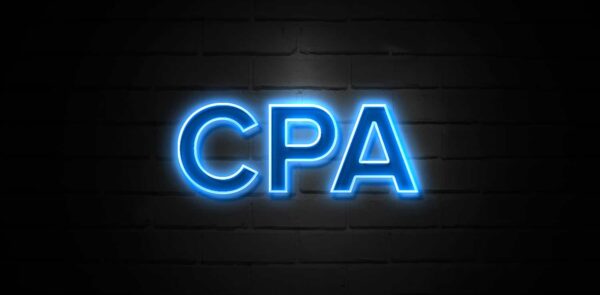
Jump to a section:
When you think about marketing cutting-edge Internet of Things (IoT) solutions, platforms like Google Ads might not be the first avenue that springs to mind. After all, IoT businesses often provide highly specialized hardware and software that serve a range of industrial or consumer-focused needs—anything from connected medical devices to smart home systems or industrial sensors for predictive maintenance. But in an increasingly competitive market, Google Ads (also known as Google PPC or pay-per-click) can become a powerful, scalable way to reach potential customers at exactly the moment they’re searching for solutions like yours.
According to Statista, the global IoT market will surpass $1 trillion in annual revenue by 2030, indicating just how massive the opportunity truly is. This surge means there’s also a flood of new players and existing competitors targeting the same audiences—everyone from electronics giants to specialized startups. In this environment, your Google Ads strategy can’t be an afterthought. You need to carefully craft your PPC approach, ensuring you capture the right leads, at the right price, and then convert them into paying customers or long-term partnerships.
Understanding the IoT Solutions Market
Fragmented Yet Rapidly Growing
One of the biggest challenges in IoT is its fragmentation. The Internet of Things encompasses wearables, smart home devices, industrial automation, connected healthcare, automotive IoT, and countless other niches. Each sub-segment has unique buyer personas:
- Industrial IoT (IIoT) focuses on decision-makers like plant managers, production engineers, or supply chain execs who look for cost savings, improved operational efficiency, and real-time monitoring.
- Consumer IoT targets end users who want convenience, energy savings, or better security (think smart thermostats, security cameras, or wearable health monitors).
This fragmentation means a “one-size-fits-all” Google Ads campaign won’t cut it. You need specialized campaigns, ad groups, and even separate landing pages that speak directly to each customer type.
The Importance of Education
Whether you’re B2B or B2C, IoT often involves new technology or complex integrations. Potential customers might not even know the exact terms to search for—“predictive analytics sensor,” “smart home battery backup,” or “connected industrial robotics,” for example. Educational content and thoughtful keyword choices can help fill the knowledge gap, driving relevant traffic that’s more likely to convert once they learn why your solution is the right fit.
Why Google Ads for IoT Providers?
Target High-Intent Searches
If someone types “smart building energy management system” into Google, they’re probably either researching or actively looking to purchase. By bidding on these high-intent keywords, you can appear right when your ideal audience needs solutions. Given IoT’s complexity, the margin for a well-timed impression can be significant—especially for B2B deals that carry large contract values.
Measurable ROI
One of the biggest advantages of Google Ads is the wealth of data you can gather. From click-through rates to cost-per-conversion, you can tweak your approach in real time. This is particularly beneficial for IoT firms trying to measure the ROI of their marketing efforts, since many rely on demonstrating how each marketing dollar leads to tangible leads or sales.
Scalability and Rapid Experimentation
IoT technologies evolve quickly, and new use cases emerge all the time. With Google Ads, you can:
- Test New Markets: Experiment with new industries or geographical regions by allocating a small portion of your budget to see if there’s interest.
- Launch Quickly: Need to promote a product update or a new feature? Spin up a new campaign, refine your ad copy, and you’re live—no extensive lead times required.
Setting Up a Solid Foundation
Defining Clear Goals
Before you spend a dime on ads, nail down your objectives. Are you:
- Generating Awareness? Possibly for a new IoT device or platform.
- Driving Lead Generation? Focused on capturing email addresses or phone numbers for B2B prospects.
- Directly Selling Online? If you have an e-commerce platform for B2C IoT products.
The clearer your goals, the easier it is to structure campaigns and measure success. For example, if your main focus is lead generation, you’ll likely opt for lead form extensions in your ads, integrate conversion tracking on your “Thank You” page, and possibly run retargeting ads to re-engage site visitors.
Keyword and Market Research
A common pitfall among IoT providers is to go after broad, generic terms like “IoT solutions.” While you’ll reach a large audience, it’s likely you’ll also draw unqualified clicks. Instead, invest time in detailed keyword research, exploring long-tail queries:
- Industry-Specific Queries: “Predictive maintenance solutions for manufacturing,” “Warehouse IoT temperature monitoring.”
- Use Case Queries: “Smart home energy consumption,” “Real-time fleet tracking device.”
- Competitive Positioning: If you have direct competitors, see what keywords they’re bidding on. Tools like SEMrush or SpyFu can reveal competitor strategies, giving you insights into potentially lucrative keywords.
Account Structure for IoT Complexity
Given that IoT solutions can span multiple industries, consider structuring your Google Ads account with separate campaigns for each industry or product line. For instance:
- Campaign A: Industrial IoT solutions, broken into ad groups for predictive maintenance, supply chain tracking, etc.
- Campaign B: Consumer IoT devices, segmented by home security, smart appliances, etc.
- Campaign C: Smart city or government solutions, focusing on traffic management or utilities monitoring.
This granular approach ensures each group of keywords, ad copy, and landing pages align closely with the specific audience’s needs.
Targeting and Keyword Strategy
Balancing Broad Match vs. Exact Match
- Exact Match Keywords (and Phrase Match) can help you laser-focus on high-intent traffic (e.g., “industrial IoT platform for manufacturing”). While this yields lower volume, the conversion rate is often higher.
- Broad Match Keywords capture a broader range of searches, which is valuable if you’re unsure of all the terms prospects might use. To keep costs in check, leverage negative keywords to filter out irrelevant traffic (e.g., “games,” “music,” “IoT jokes,” etc.).
Leveraging Long-Tail Keywords
IoT prospects often search in phrases or even questions, such as “How to implement a smart home system in a multi-unit building” or “Best IoT-based predictive maintenance tool for automotive plants.” By targeting these long-tail queries, you can stand out in a less crowded space. While each term might have lower search volume, the potential for a qualified lead is much higher—often translating into a better ROI.
Geographic and Language Targeting
Some IoT firms only serve specific regions—be it U.S. states, European markets, or global. Adjust your targeting settings to avoid wasted clicks in regions you don’t serve or can’t legally do business in (e.g., certain import/export restrictions). Also consider language targeting: if you have localized versions of your product or website, create distinct campaigns in those languages for higher relevance and conversion rates.
Crafting Effective Ad Copy
Addressing Pain Points Directly
Whether it’s an industrial operation looking to reduce downtime or a homeowner wanting peace of mind, your ad copy should speak to these pain points:
- Industrial Example: “Cut unplanned downtime by 30%—Implement Our IoT Predictive Maintenance Platform.”
- Consumer Example: “Secure Your Home with Real-Time Alerts—Upgrade to Our Smart Security System.”
Highlighting ROI and Key Differentiators
IoT can be an expensive investment, so stating ROI, unique features, or proven success stories can help build trust quickly:
- “Save 20% on Energy Bills with Our Smart Thermostat—Free Installation!”
- “Trusted by 500+ Manufacturing Plants Worldwide—Learn Why Our IoT Sensors Lead the Market.”
For B2B, phrases like “Case Study” or “White Paper” can entice more in-depth research. For B2C, simpler language and direct benefits often work best.
CTAs That Encourage Immediate Action
A strong Call to Action (CTA) can make or break your conversion rate. Experiment with:
- B2B CTAs: “Book a Demo,” “Get a Custom Quote,” “Download Our White Paper.”
- B2C CTAs: “Buy Now & Save,” “Claim Your Discount,” “Secure Your Home Today.”
Even something as subtle as “See How It Works” can be powerful for IoT solutions, given that many consumers are curious about new tech but want a simple introduction.
Ad Formats & Extensions
Search Ads
Search campaigns are typically your bread and butter. Users actively searching for terms like “smart energy solutions” or “IoT security device” see a text-based ad near the top of Google’s results. Best Practices:
- Use ad extensions like sitelinks (to direct users to different sections of your site), call extensions (especially if your sales cycle involves phone consultation), and structured snippets (e.g., highlight product categories or features).
Display Ads
Display ads can boost brand awareness by showing your banners on relevant websites and blogs. For IoT, this might be technology news sites, industrial automation forums, or consumer tech review portals. Visuals of your IoT device in action or simplified infographics demonstrating data flow can spark curiosity.
Video Ads (YouTube)
IoT often needs a visual explanation—especially for B2B buyers or consumers new to the product. Short, educational videos that demonstrate your solution’s core benefits can be highly engaging. Consider:
- TrueView In-Stream Ads (skippable) for broader awareness.
- Non-Skippable Bumper Ads (6 seconds) for quick brand recall.
- Targeting relevant channels, such as industry conference recordings or popular tech influencers.
Performance Max Campaigns
Google’s newer Performance Max campaigns leverage automation to serve your ads across Search, Display, YouTube, Gmail, and more, based on a single campaign setup. This can help IoT providers who don’t have a large marketing team manage complex multi-channel efforts. However, keep an eye on budget allocations since the automation might prioritize channels that don’t yield the highest-quality leads. Always review performance data regularly.
Budgeting and Bidding Strategies
Determining Your Ad Budget
For IoT solutions, the path to a sale can be lengthy, especially in B2B contexts. Start by working backward:
- Average Deal Value: Let’s say your typical contract is $50,000.
- Lead-to-Deal Conversion Rate: If 1 in 10 leads become a client, each lead is theoretically worth $5,000.
- Target CPA (Cost Per Acquisition): You might set a target cost of $500 per lead, anticipating that 1 out of every 10 leads yields a $50k deal.
This math offers a starting point for your monthly ad budget. Adjust as you gather real data.
Manual vs. Automated Bidding
- Manual CPC: Allows precise control over bids for each keyword but requires constant monitoring.
- Automated Bidding: Options like Target CPA, Maximize Conversions, or Target ROAS let Google optimize bids using machine learning. This can save time and yield great results if you have enough conversion data.
Seasonal and Industry Events
IoT purchasing patterns may spike around key industry conferences (e.g., CES or IoT World Congress) or technology budget cycles (often Q4 or Q1 for many organizations). Anticipate these spikes and allocate extra budget or adjust bids to remain competitive during high-traffic periods.
Landing Page Optimization & Funnel Building
Relevance Is Key
Nothing kills conversion faster than sending a user interested in “smart home automation” to a generic homepage that doesn’t mention your smart home solution. Create dedicated landing pages for each campaign or ad group, matching the keywords and ad copy exactly. For instance, an ad about “smart factory robotics” should land on a page discussing the use cases, benefits, and technical specs for industrial robotics.
Clear, Concise, and Trust-Building
Your landing page should:
- Explain Benefits Immediately: Summarize how your IoT solution solves a specific problem.
- Feature Social Proof: Display logos of partner companies, relevant certifications, or testimonials.
- Offer a Single CTA: If you want them to sign up for a demo, make that the focus. If you want them to purchase directly, include an “Add to Cart” or “Buy Now” button.
Lead Nurturing for Longer Cycles
Especially on the B2B side, you might capture an email but still have months before a final sale. Use marketing automation or email drip campaigns to keep these leads engaged. Provide case studies, relevant white papers, or industry reports. By the time they’re ready to buy, your brand is top of mind.
Metrics, Measurement & Conversion Tracking
Essential KPIs
- Click-Through Rate (CTR): Indicates how compelling your ads are. Aim for at least 2-3% for well-optimized IoT search ads, though this can vary by niche.
- Conversion Rate: The percentage of clicks that complete your desired action (form fill, purchase, etc.). This is typically 2-10% for IoT, depending on the complexity.
- Cost Per Lead (CPL): Measures how cost-effective your campaigns are at bringing in new prospects.
- Return on Ad Spend (ROAS): Compares revenue generated to ad spend—particularly relevant if you sell consumer IoT devices online.
Advanced Tracking with Google Analytics 4 (GA4)
Migrating to GA4 or properly setting it up is crucial for IoT providers. GA4’s event-based model allows you to track more granular user interactions, such as:
- Product demo video views
- Button clicks for resource downloads
- Scroll depth on technical explanation pages
By aligning these micro-conversions with your final sales or lead completions, you can better understand which parts of the user journey are most influential.
Offline Conversions
For B2B IoT deals that close offline, in-person, or after multiple phone calls, set up offline conversion tracking. By uploading data (e.g., lead status changes in your CRM) back into Google Ads, you can see which campaigns are driving actual sales, not just lead forms. This helps you refine budget allocations based on real revenue impact.
Conclusion
In the ever-expanding realm of the Internet of Things—where everything from home security to industrial machinery is becoming smarter and more interconnected—Google Ads can be the linchpin that propels your brand forward. Whether you’re targeting large manufacturing plants, mid-size businesses looking to automate their operations, or everyday consumers wanting the latest connected gadget, a well-structured PPC strategy ensures you’ll be front and center when they search for solutions.
But success in IoT PPC requires more than just throwing money at broad keywords. It involves a carefully orchestrated approach: hyper-focused keyword selection, compelling ad copy that highlights ROI and unique selling points, robust landing pages that speak to specific pain points, and relentless optimization to ensure each click has the highest chance of converting. Real-time data and iterative testing are your allies in refining campaigns for maximum impact.
Remember, you’re not merely selling products or services—you’re offering tangible transformations: The reduction of operational costs, the empowerment of data-driven decision-making, and the convenience of an interconnected lifestyle. By leveraging Google Ads in a strategic, data-focused manner, you can spark interest, nurture leads, and ultimately convince your audience that your IoT solutions are the key to unlocking a more efficient, secure, and innovative future.


